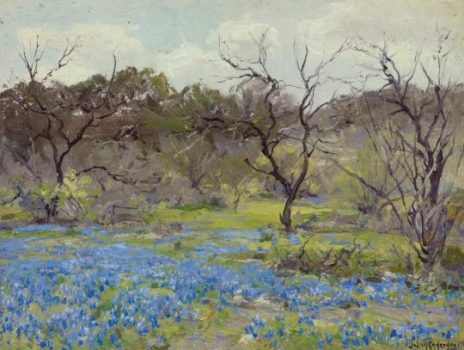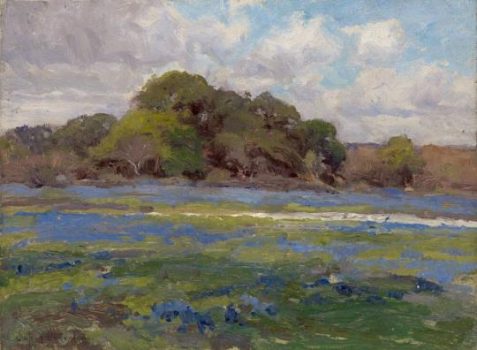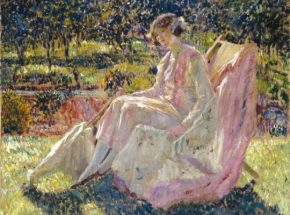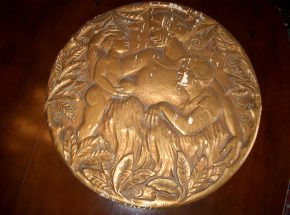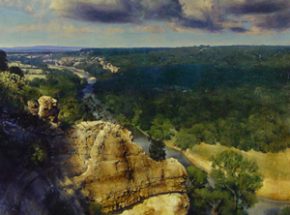
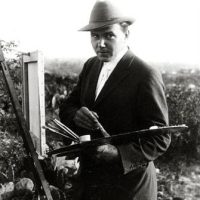
Born in San Antonio, Texas, to a family of creatives and painters, Julian Onderdonk moved to New York at the age of nineteen to study with William Merritt Chase, one of the leaders of American impressionism. After working in New York as an artist for a few years, Onderdonk returned to San Antonio with his wife and daughter. The first artist to devote significant attention to the Texas Hill Country, he became known for his landscapes, particularly those depicting the state’s characteristic bluebonnet flowers. Onderdonk’s small, intimate panel paintings typify his remarkable ability to convey the essence of his home state through its natural world.
Source: Museum of Fine Arts, Houston




